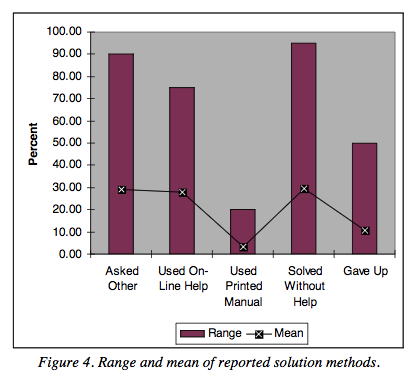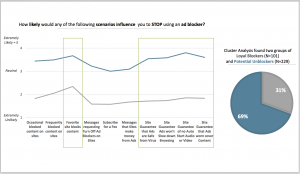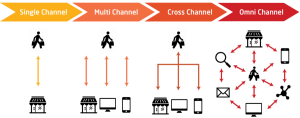— February 28, 2018

Humans are responsible for 70% of airplane crashes, 90% of car wrecks, and 90% of workplace accidents.
But people are also a core part of business. The same factors that make humans irreplaceable — nuanced judgment, emotion, and creativity — also make humans a pain to manage.
You don’t get these problems with computers, but computers are also dumb. Mostly too dumb to carry out processes without human intervention.
Humans are the chaotic variables in your processes. Humans make spelling errors in your marketing emails, create security risks in your software, and forget pretty much anything that isn’t written down.
And it’s because of human error that businesses need processes.

In The Checklist Manifesto, surgeon and New York Times columnist Atul Gawande set out to reduce human error in the operating theater. Surgery has long been scrutinized for the study of human error, but Gawande believed there was too much focus on shiny new technology as the solution, and not enough emphasis on simple error prevention methods like checklists.
Sure enough, in his study, implementing a simple checklist caused error rates to plummet. The implementation of a formal process costs almost nothing, but saves lives and improves operational efficiency more effectively than new technology could.
At Process Street, we create technology designed to be used by humans to eliminate error, remember how to do tasks, and build automated workflows that decrease a business’ reliance on manual work. However, processes are only as good as the flawed humans that build, test, and optimize them.
In this post, I’m going to look at some simple psychological concepts and their implications for processes the workplace.
Psychological factors determine how competently work is done, how accurately information is recalled, and how work habits — both constructive and deviant — are formed. By understanding the psychology at work, we understand why we:
- Default to forgetful behavior
- Fail to follow instructions
- Blame the wrong root cause for bad processes (and make the same mistakes over and over)
Understand these flaws, and you can start to build more effective processes that reduce errors, cut costs, and produce better outcomes.
First, let’s look at memory.
Memory: build systems so nothing is forgotten
How many things do you think you can hold in your short-term memory?
As impressive as the human brain is, your short-term memory is about as spacious as a burning post-it note — it can hold between 5 and 9 items (7 ± 2) for around 20 seconds.

Any information that gets past that post-it note stage is committed to long-term memory, but long-term memory has its own unique set of problems. According to Pimsleur, to remember information accurately you need to repeat it at regular intervals. His method, which has since been used in the field of language learning, states that 11 repetitions are required to recall information accurately.
Processes are vital for learning and recall task information because they provide a way to see step-by-step instructions and protocols for tasks, like this:

Our pre-made office cleaning checklist
…But not every business makes processes that solve the issue of bad memory. Processes are often cumbersome, elaborate, and hard to skim — this is a recipe for your team abandoning the manual and making their own informal and error-riddled processes mentally.
Do we not realize how bad our memory is? Are we naturally averse to using processes?
There are a few fascinating studies that shed light on this.
The curse of confidence
The human memory is paradoxical. After being given instructions, we’re likely to think that we’ll remember them when the data says we will likely forget.
A 1981 study by Asher Koriat examined how effectively participants could recall related word pairs (lamp/light, buy/sell). It revealed that our natural overconfidence seriously inhibits us from accurately judging our own knowledge. The word pairs in the study logically follow on from one another, so participants believed the task was easier than it was. For example, the word “light” feels like the only counterpart to the word “lamp”, but when the time came to recall the pair participants erroneously answered with guesses like “shade” and “bulb”.
Another study, cited in the book Why We Make Mistakes, revealed that 65% of passwords are forgotten every three months.
In other words, we assume we already know information, or how a task is done, and don’t bother to document it. And, to make matters worse, we are likely to forget crucial information — even that as crucial as passwords.
The curse of knowledge
 (Source)
(Source)
The root cause isn’t just that the employees executing the process are forgetful. There is also the curse of knowledge, which skews the process creator or manager’s perception to believe that the team will know and recall information just because the manager can. For example, from a 2005 paper written by Koriat and Bjork:
“As an example of the incapacitating effect of one’s knowledge, Newton (1990) asked participants (tappers) to tap out the rhythm of a familiar song to listeners and to predict the likelihood that the listeners would successfully identify the song. Although tappers’ predictions averaged 50%, the actual success rate of listeners averaged less than 3%.”
These massive disconnects explain why many businesses are allergic to processes — managers believe their teams won’t need a process, and the overconfident team is all too happy to oblige.
The phenomenon of infrequent work
Once every two years, our CTO Cameron needs to renew our SSL security certificate. The task is quite complex and easy to mess up, but it also occurs so infrequently that it is easy to overlook entirely. To make sure it’s done perfectly, Cameron has meticulously documented the best way to renew an SSL certificate, and set himself a recurring checklist as a reminder.
Studies indicate that it is essential to document tasks that are done infrequently, because something done rarely is more likely to be done incorrectly. In the book Why We Make Mistakes, the author Joseph Hallinan makes the case for this statement by using the examples of baggage screeners and radiologists dealing with infrequent occurrences in their jobs:
“[…] routine mammograms reveal tumors only 0.3 percent of the time. In other words, 99.7 percent of the time, they won’t find what they’re looking for. Guns are even rarer. In 2004, according to the Transportation Security Administration, 650 million passengers traveled in the United States by air. But screeners found only 598 firearms. Both occupations, not surprisingly, have considerable error rates. Several studies suggest the “miss” rate for radiologists hovers in the 30 percent range.“
When choosing which processes to document first, it’s a good idea to look at the valuable processes you need occasionally as well the more frequent routine tasks — research indicates that you’re more likely to hit a snag with a rarer task than a more common one.
Reducing the margin for error: how best to convey instructions
One massive issue with processes is that people are often unwilling to use them. A study into why people are reluctant to read documentation or instructions, conducted by David Novick and Karen Ward, revealed that the majority of people would rather muddle through, give up, search online, or ask a peer than use a manual:

This isn’t some fundamental flaw or display of stupidity. It’s a deep mistrust in the power of documentation.
Here are the top reasons participants didn’t use the documentation:
- physically hard to handle (58 percent of the 19 participants offered descriptions such as “bulky,” and “cumbersome”)
- hard to navigate (37 percent)
- too basic to be useful (37 percent)
- hard to understand (26 percent)
- unstylish (26 percent characterized manuals as “unstylish,” “boring,” or “antiquated”)
- out of date (21 percent)
From this study, it’s obvious that the last thing someone wants to do to solve a problem is to look up the solution in a manual. We’re used to manuals being either too basic, or too complex. We expect them to be outdated, and for the information to be hard to find. This doesn’t mean that documentation can’t be effective — on the contrary, good documentation is essential for smoothly running a business — but it does mean that you need to make effort to make processes appealing and usable.
65% of people are visual learners
According to a famous paper by William C. Bradford, 65% of people would rather learn from images and videos than text.
For process creation, it’s a simple solution: include screenshots, tables, diagrams and video explanations in your processes to accompany the text.
This will help most people better comprehend and execute the task, improving quality and efficiency. You can even use a standard like BPMN to create flowchart representations of your processes:

We recommend Draw.io — a free and open source tool that helps you create any kind of diagram.
Digital vs. physical documents
The implications of the Novick and Ward study on technical documentation I referred to earlier go deeper than a simple dislike of processes. The negative connotations of documentation (including that it is outdated and cumbersome) are actually regarding physical documentation, e.g. paper user manuals.
When it came to digital documentation, participants described it as:
- convenient (58 percent)
- helpful (26 percent)
- searchable (21 percent)
- easy to use (21 percent)
Make it more likely that your organization will use the processes you create by offering them in a digital format. Process Street is software for digitally documenting and executing processes. It has a focus on usability, and allows users to search for the process they need. By storing your processes digitally, you make processes easier and more appealing for your team to adopt.
Misattribution of blame: how to find the real root cause of a broken process
The misattribution of blame is one big reason that gets in the way of us learning from experience. It skews our judgment when optimizing a process — if your assumption of a problem’s root cause is wrong, there’s no chance you’re going to fix the system that brought that problem to be.
Blame is misattributed because of something researchers call hindsight bias. It’s the tendency to disregard facts and avoid analytical solutions based on the feeling that you “knew it all along”. And, whether or not someone in the team did spot a suspected root cause, they may have been afraid to speak out because of an unwillingness to question authority.
By being aware of hindsight bias and improving communication across your team’s hierarchy, you will be more able to fix broken processes objectively, or avoid mistakes before they happen.
Hindsight bias

(Source)
Hindsight bias (or “I knew it all along” phenomenon), is a well-documented issue that impedes object decision-making. In a 2012 paper, Neal Roese and Kathleen Vohs use a clear business example to explain:
“A manager hires a new employee on the basis of solid credentials and recommendations. After several months of lackluster performance by the employee, however, the manager begins to regret her decision. After a year, the employee is terminated. Senior management investigate the manager’s decision and uncover several “warning signs” that the manager should have noticed prior to hiring. The manager receives a poor annual evaluation on the basis of that single hiring decision.”
In this case, the outcome is that the manager is punished for a systemic error and the root cause isn’t addressed. Senior management’s bias leads to oversimplification of the problem and, rather than implementing a system to catch these “warning signs” as they appear, the manager is singled out as a convenient scapegoat.
Hindsight bias will lead you to believe that a problem was fully predictable and avoidable, even if the systems were not in place to make that belief realistic.
Instead of making a weak resolution to “just check next time”, add error prevention (Poka-Yoke) to the process.
Flattening the authority gradient
Another effect that could get in the way of properly diagnosing an error is the authority gradient.
The authority gradient was first documented in aviation when examining problems that stemmed from communication issues between pilots and co-pilots. Generally, if the co-pilot felt they had significantly less experience, expertise or authority, they would be less likely to raise vital issues that help avert catastrophes. Crosky and Croskerry explain:
“As the trans-cockpit authority gradient increases, so does the number of incidents. As many as 40% of junior-ranking copilots reported a failure to relay significant doubts about safety to their pilots. When junior officers do offer their concerns, their senior-ranking officers may dismiss them without careful consideration. The failures of subordinate first officers to challenge their captains despite dangerous actions and violations of safety rules, and the failures of captains to heed warnings from crew members, are cited as factors in a number of airplane crashes, including the runway collision of two airliners at Tenerife in 1977 in which 583 people died.”
Going back to The Checklist Manifesto, one benefit of a checklist in the operating theater is that it deferred authority to an inanimate object. If the checklist says to do it, you do it — there’s less cause for debate or sheepishness over questioning authority.
Documented processes are one way to flatten the authority gradient, but company culture is important too. Some startups have radically reinvented company culture and hierarchy to encourage team collaboration and open communication, and this is aligned with solutions offered in the Crosky and Croskerry paper from which I quoted.
The researchers suggest normalizing curiosity and questioning as part of the training process, involving a third party in disputes, and raising issues in a non-aggressive manner (“How do we usually recognize this issue?”).
Using these principles in your business
Psychological research can’t tell you exactly what to do and how to do it, but it can provide a framework for you to reconsider how your business operates and how you manage your processes.
- Are you overlooking crucial tasks because of overconfidence?
- When writing processes, are you falling victim to the curse of knowledge and leaving out important details?
- Do you have documentation for infrequent, easily-forgotten tasks?
- Are you providing enough visuals in your processes to account for visual learners?
- Is your documentation digital to encourage adoption and repeated usage?
- Are you making biased decisions that prevent you from best optimizing a process?
- Are your team members afraid to question one another?
I hope this article has helped you take another look at your business processes through the lens of psychology. If you have any cases where you’ve noticed these effects in action, let me know in the comments!
Business & Finance Articles on Business 2 Community
(82)
Report Post








